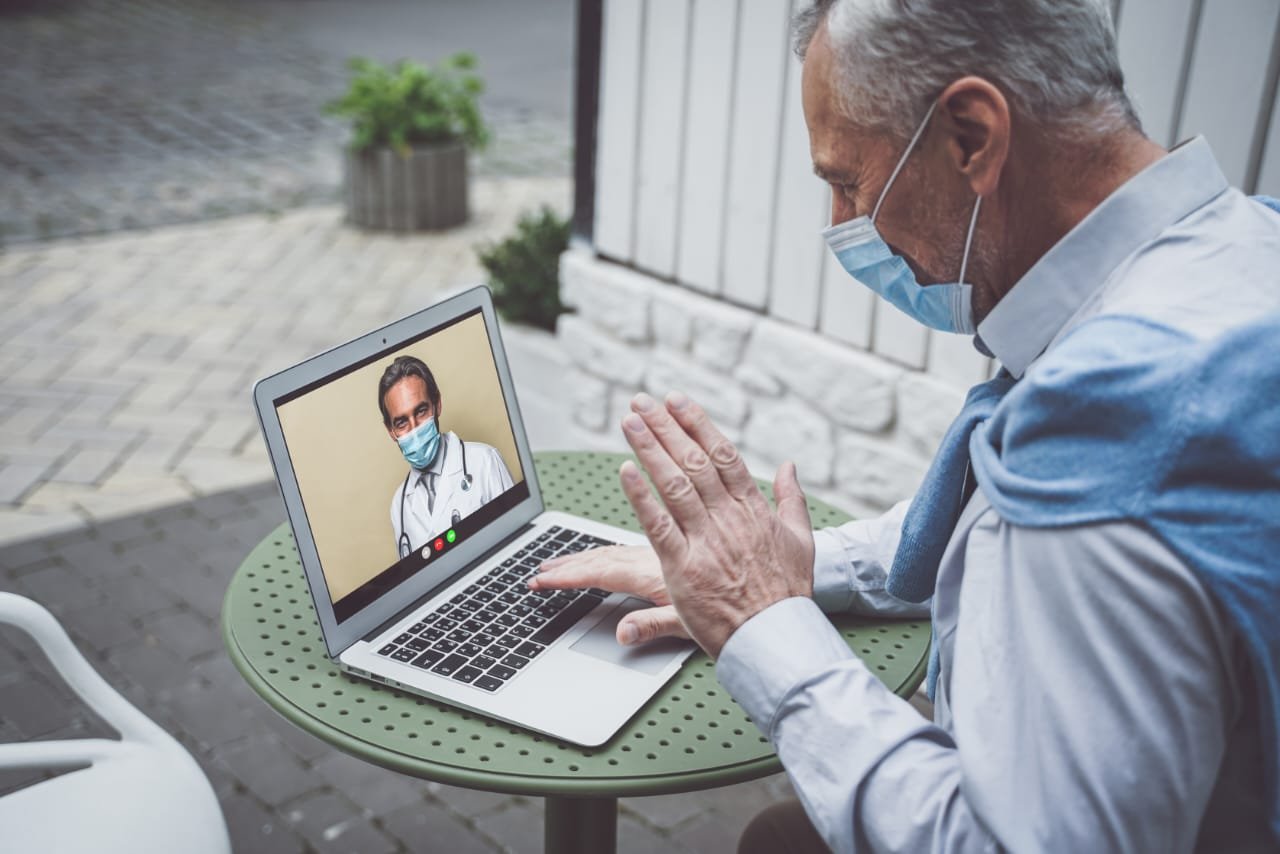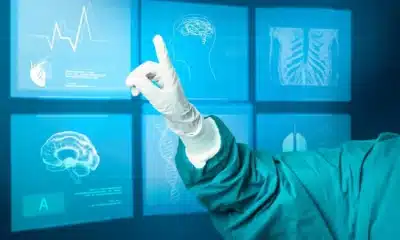Tech
The Evolution of Remote Patient Monitoring in Modern Healthcare
Published
5 days agoon
By
Alexander
RPM has gained tremendous momentum as an emerging niche in healthcare delivery to become a fundamental element of delivering care. The traditional model of care, where a patient had to visit a hospital or clinic to receive all their check-ups, has not been very efficient, particularly among chronically ill patients. RPM inverts this model, and continuous care is received without geographic or logistical restrictions. It links patients and providers with real-time information, thereby building a proactive healthcare system as opposed to a reactive one.
The emergence of Remote Patient Monitoring (RPM) may be attributed to the convergence of several factors: the ageing population, the rise in chronic conditions, the development of connected health technologies, and the growing need to ensure cost-efficient care. International healthcare systems have realized that the previous model of waiting until the patient becomes ill is unsustainable. Remote Patient Monitoring makes people healthier, reduces unnecessary hospitalizations, and improves clinical outcomes through early intervention.
How Remote Patient Monitoring Works?
Continuous data collection is the key element of RPM. Connected medical devices such as blood pressure devices, glucose sensors, ECG patches, or smart scales are used by patients to record health measurements at home. These gadgets transmit data through encrypted wireless links to a central site that can be accessed by health practitioners.
This data is then analyzed by providers in real time on dashboards, and any anomalies, patterns, and alerts are identified. When the readings of a patient surpass a limit, e.g. sudden rise in blood pressure or irregular heartbeat, the system alerts clinicians immediately. The care team can contact a patient immediately, revise medications, or arrange follow-ups instead of waiting until the time of an in-person visit.
RPM seems natural to patients. The majority of systems need the least amount of effort, devices are automated, applications are intuitive, and information runs constantly in the background. Video calls, educational materials, and notifications are also part of many RPMs, which assist patients in remaining adherent and active.
Important Advantages of Remote Patient Monitoring
RPM has advantages at all levels of healthcare. It is liberating and convenient for the patients. They are able to get medical services at their homes, which is particularly important to the aged, the disabled, or the rural group. It improves the accuracy of diagnoses in providers and makes it possible to monitor them constantly.
The financial benefits of healthcare organizations are lower costs of hospital readmissions, improved patient outcomes, and the capacity growth without growing physical infrastructure. The value is also acknowledged by the insurers, who now pay back RPM programs since this reduces long-term expenditure on managing chronic diseases.
RPM of Chronic Disease and Post-Acute Care
Chronic diseases constitute most of the healthcare expenditures in the world, and the RPM is among the most effective instruments for dealing with them. Patients with diabetes, heart failure, or hypertension should also be under constant monitoring to prevent complications. RPM allows the collection of data on a daily basis and immediate intervention in the event that the findings do not conform to the normal range.
As an example, a patient with heart failure who is on a connected scale can notify the providers that they are retaining fluid before the symptoms become worse. Continuous glucose monitors used in the management of diabetes transmit real-time data, which is used to adjust the treatment immediately. The possibility of detecting deterioration promptly lessens the number of ER visits and avoids hospitalization.
Another key domain in which RPM is very effective is post-acute care. Patients can be remotely monitored after surgery or on hospital discharge to determine the progress of recovery and wound healing, as well as vitals. It helps the providers to identify the complication at an early stage, resulting in a quick recovery and reduced readmission.
Technology and Operations Problems
Even with its potential, RPM implementation does not come without challenges. One of the biggest challenges is interoperability- it can take much effort in IT to make different devices, EHR systems, and data standards work together. The other issue is security, since violations of healthcare information are getting more frequent. Patient information should be safeguarded through strong encryption, authentication, and HIPAA compliance.
Other barriers can be cost and infrastructure. Smaller clinics might not have the funds to implement full-scale RPM programs. Also, low digital literacy or mistrust toward technology may restrict the adoption of the patient. The solution to these problems involves education, easy-to-use design, and patient support systems.
Patient Engagement and Change of Behavior
The change in patient behavior that RPM causes is one of the most underestimated benefits of this treatment method. In the case where people will be able to view their own health data in real-time, they will become more responsible and interested. They are able to visualize how their eating, exercising, or taking medication will affect their readings, and make better life decisions.
The interaction also enhances better relationships between care groups and patients. Patients can interact directly with the provider, request clarification, and get a quick response via mobile apps and messaging services. This constant communication makes healthcare more personal, even when it is done remotely.
Barriers to Implementation
Regardless of its potential, RPM adoption continues to encounter practical challenges. The problem of costs is still there, particularly with smaller practices or low-funded healthcare systems. Reimbursement is growing around the provision of RPM services, but the absence of consistent policy frameworks and the uncertainty of billing codes hinder the slow development.
Technical integration may also be complicated. A lot of hospitals are still using outdated systems that find it hard to integrate with the latest IoT-based RPM systems. On top of this, the issue of privacy is still looming. Patients must be convinced that their information is coded, kept safely, and utilized in a proper manner.
Lastly, there is a problem of user adoption. Not all patients are retech-friendly, and some patients might not be ready to undergo frequent monitoring because of privacy concerns, or they are tired of technology. Patient education and simplicity of the systems are the key to success.
The Economic and Clinical Impact
RPM has demonstrated both obvious economic and clinical advantages. Research findings are always in favor of low readmissions, fewer ER visits, and better disease management outcomes in patients with remote monitoring. There are improved efficiencies on the part of healthcare providers and reduced costs per patient on the part of the insurers.
Indicatively, post-cardiac care hospitals utilizing RPM have reduced readmission by up to 50% of the readmission rates. Continuous glucose monitors are programs that help in the management of diabetes and improve glycemic control, thus reducing complications. The payback does not exist on paper; it is already being realized in practical environments.
Conclusion
The future of connected medicine is remote patient monitoring. It is where prevention is met with precision and where patients are made active participants in the health journey. The future hospitals will not only treat their patients, but they will also be able to monitor, guide, and protect their patients even before they fall sick.
You may like


Why Companies Worldwide Are Hiring Power BI Developers

Experience Pure Android Gameplay with MuMuPlayer Emulator

A Guide To Solar PV For Homeowners

How to Convert a Historic Building into a Hotel: a 2025 Guide

How You Can Integrate AI into Your Small Business For Faster Growth

File Recovery on Android: Myths vs. Facts

Cooler, Safer, Clearer: Why Quality Window Tint Is a Smart Upgrade in 2025

How Medium-Sized Businesses Actually Handle Their Books

Best Travel Vacuum Bags: Pack More and Worry Less with Vacbird Storage Bags

Start Your Morning Right: The Real Benefits of Himalayan Pink Salt and Lemon Water

Carol Kirkwood’s Journey: Her Real Age, Husband, Career, and More

Revolutionizing Healthcare: The Emergence of AI-Driven Analytics

How Machine Learning and AI are Redefining the Future?

Aliza Barber: Meet Lance Barber’s Wife, Age, Life, Profile, Career and Net Worth

Evelyn Melendez: Jordan Knight’s Wife Bio, Marriage, Family, Career and Net Worth

Ilan Tobianah Biography: Family, Marriage, Lifestyle, Career and Net Worth

Who was Alice Marrow? Everything to Know About Ice-T’s and His Mother

King Von’s Autopsy Report: The Truth Behind the Tragic Death

Meet Otelia Cox: The Supportive Wife of Tony Cox – A True Fairy Tale Romance

Tea Leoni and Tim Daly Split – A Closer Look at Their Relationship and Breakup

Why Companies Worldwide Are Hiring Power BI Developers

Experience Pure Android Gameplay with MuMuPlayer Emulator

A Guide To Solar PV For Homeowners

How to Convert a Historic Building into a Hotel: a 2025 Guide

How You Can Integrate AI into Your Small Business For Faster Growth

File Recovery on Android: Myths vs. Facts

Cooler, Safer, Clearer: Why Quality Window Tint Is a Smart Upgrade in 2025

How Medium-Sized Businesses Actually Handle Their Books

Best Travel Vacuum Bags: Pack More and Worry Less with Vacbird Storage Bags

Start Your Morning Right: The Real Benefits of Himalayan Pink Salt and Lemon Water
Category
Trending
-

 News3 months ago
News3 months agoCarol Kirkwood’s Journey: Her Real Age, Husband, Career, and More
-

 Health2 years ago
Health2 years agoRevolutionizing Healthcare: The Emergence of AI-Driven Analytics
-

 Technology2 years ago
Technology2 years agoHow Machine Learning and AI are Redefining the Future?
-

 Celebrity2 years ago
Celebrity2 years agoAliza Barber: Meet Lance Barber’s Wife, Age, Life, Profile, Career and Net Worth
